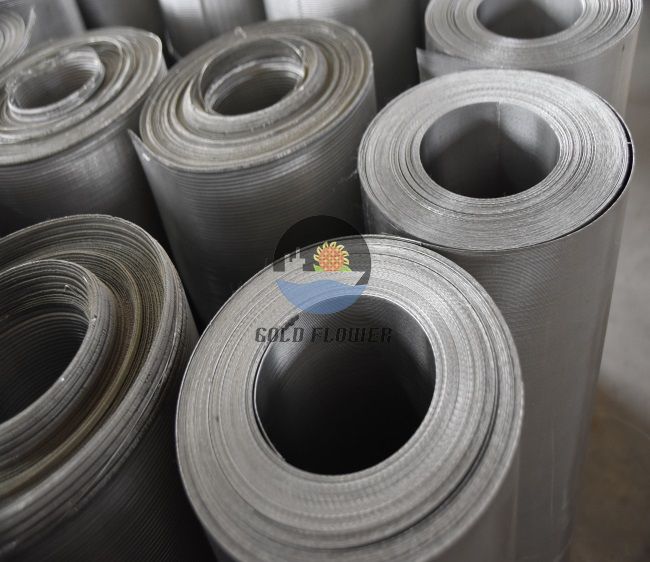Dic . 03, 2024 11:37 Back to list
stainless steel wire mesh size
Understanding Stainless Steel Wire Mesh Size A Comprehensive Guide
When it comes to industrial applications, architectural design, filtration, and security, stainless steel wire mesh is a versatile material that has gained popularity across various fields. Its durability, resistance to corrosion, and aesthetic appeal make it a preferred choice for many. However, one of the critical factors that can significantly affect the performance and suitability of stainless steel wire mesh for specific applications is its size. In this article, we will explore the various aspects of stainless steel wire mesh size, including its dimensions, mesh count, wire diameter, and the impact these factors have on functionality.
1. The Basics of Wire Mesh Size
Stainless steel wire mesh is characterized by two key dimensions the wire diameter and the mesh count. The wire diameter refers to the thickness of the wire used to create the mesh, while the mesh count indicates the number of openings per linear inch in the mesh. These two dimensions work together to determine the overall performance of the mesh in specific applications.
2. Understanding Mesh Count
Mesh count plays a crucial role in defining the size of stainless steel wire mesh. A higher mesh count means more openings in the same amount of space, which results in a finer mesh that can filter out smaller particles. Conversely, a lower mesh count indicates larger openings, which allows for the passage of bigger materials or substances. When selecting stainless steel wire mesh, it is essential to consider the type of application you have in mind. For instance
- Fine mesh (higher mesh count) Ideal for applications requiring filtration of small particles, such as in coffee or tea processing, pharmaceutical manufacturing, or water filtration systems. - Coarse mesh (lower mesh count) Suitable for applications like security fencing, gutters, or protective screens, where strength and durability are more critical than particle size filtration.
3. The Importance of Wire Diameter
stainless steel wire mesh size

The diameter of the wire used in stainless steel wire mesh directly influences its strength, flexibility, and weight. Thicker wires provide greater strength and resistance to deformation under stress, therefore, they are preferred in heavy-duty applications. On the other hand, thinner wires are more flexible and lighter, making them suitable for applications where weight and ease of installation are significant factors.
For example, a heavy-duty stainless steel wire mesh with a thicker wire diameter is necessary for applications in construction, where it is subjected to high loads and potential impacts. In contrast, a thinner wire mesh might be used in decorative applications or as a filter for less abrasive materials.
4. Mesh Size Applications
The size of stainless steel wire mesh affects its applicability across various fields. Here are some noteworthy applications influenced by mesh size
- Industrial Filtration Fine mesh (higher mesh counts) is essential in industrial processes requiring precision filtration, such as chemical processing or air filtration. - Agriculture Coarse mesh options are often used in fencing or as screens for protection against pests, while finer meshes can assist in seed starting or soil separation. - Architecture and Decor Stainless steel wire mesh with varied sizes is employed in architectural facades, balustrades, or even artistic installations. The chosen mesh size enhances aesthetic appeal while providing structural integrity. 5. Choosing the Right Stainless Steel Wire Mesh Size
Selecting the appropriate stainless steel wire mesh size for your application requires careful consideration of several factors
- Application Requirements Identify the purpose of the wire mesh. Will it be used for filtration, security, or aesthetic purposes? - Material Characteristics Understand the characteristics of the materials that will pass through or be contained by the wire mesh. Are they heavy, light, abrasive, or corrosive? - Environmental Factors Consider environmental aspects, such as exposure to moisture, chemicals, and temperature fluctuations, that may influence the material's performance.
In conclusion, the size of stainless steel wire mesh—encompassing wire diameter and mesh count—plays a vital role in its functionality and suitability for various applications. By understanding the implications of wire mesh size, users can make informed decisions that enhance the performance and longevity of their projects. Whether in industrial, agricultural, or architectural contexts, the right stainless steel wire mesh size can make all the difference.
share
-
CE Certified 250 Micron Stainless Steel Mesh | Precision & Durability
NewsAug.27,2025
-
CE Certified 250 Micron Stainless Steel Mesh for Precision & Durability
NewsAug.26,2025
-
CE Certified 250 Micron Stainless Steel Mesh for Precision & Durability
NewsAug.25,2025
-
Premium CE Certified Metal Fine Mesh for Precision & Safety
NewsAug.24,2025
-
Stainless Steel Wedge Wire Mesh: Durable, Precision Filtration
NewsAug.23,2025
-
CE Certified 250 Micron Stainless Steel Mesh for Precision Filtration
NewsAug.22,2025

